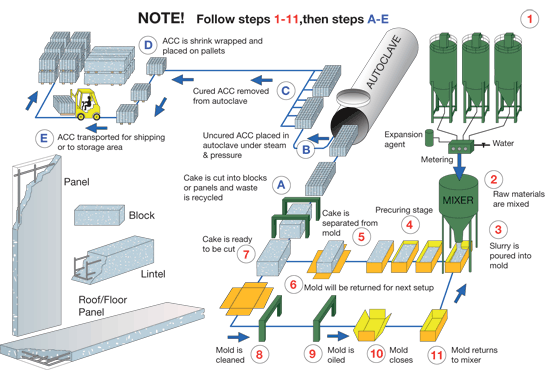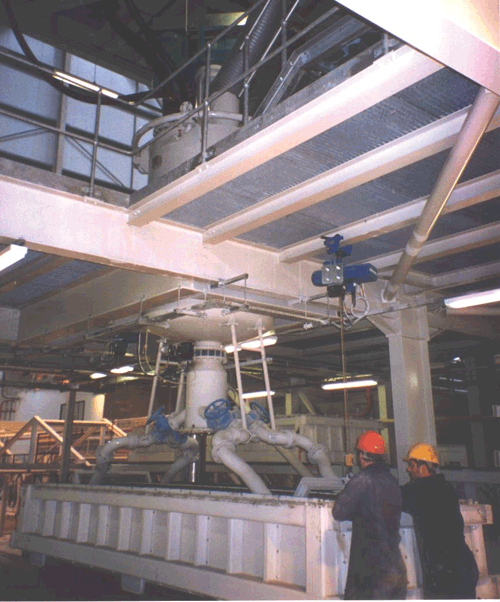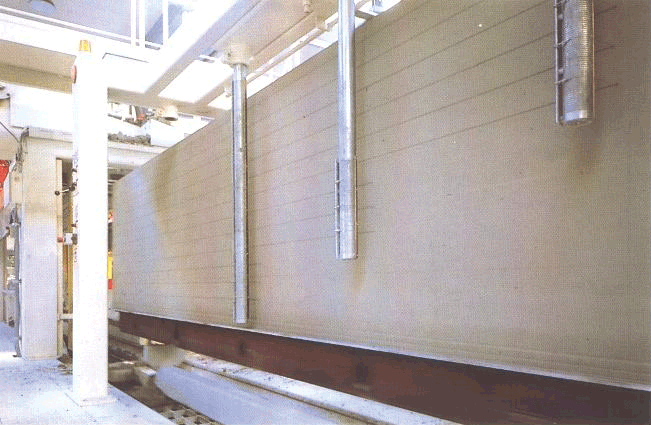Supercrete AAC Production |
|
Autoclaved Aerated Concrete is made from traditional concrete or mortar ingredients - sand, cement, lime and water.
The aeration is caused by the addition of a small quantity of acidic aluminium paste that reacts with the alkaline lime & cement to expand the mixture. This reaction causes the release of hydrogen gas and the formation of tiny, finely dispersed bubbles. The hydrogen dissipates after the reaction process leaving the air filled bubbles. After mixing, the slurry is placed in a mould for curing.
For products that require reinforcing, the corrosion protected steel reinforcing mesh is placed in the mould before the slurry is added. After a few hours curing the product is firm enough to be removed from the moulds and transported to a cutting machine where it is cut precisely into the required sizes. Waste material is recycled back for crushing and remixing.
Autoclaving is the final stage of curing the material under steam pressure. This takes up to 12 hours, with a pressure gradient reaching around 1.25MPa at and 190oC. Steam is cycled through successive autoclaves, reducing energy loads. The blocks, panels and lintels are removed from the autoclave and packed ready for transporting.
The Supercrete produced has a dry density of approximately 500kg/m3, giving it a dry density approximately one-quarter the density of normal reinforced concrete. 
|

